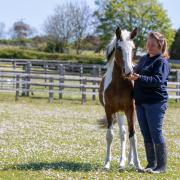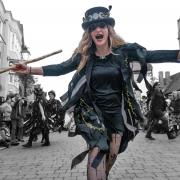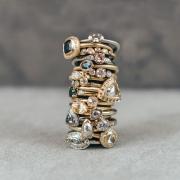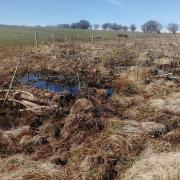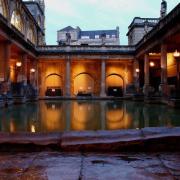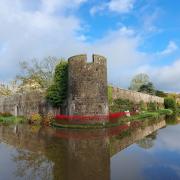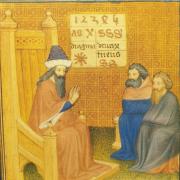The objects in my book are beautiful, surprising and intriguing, but they’re more than just pretty things to look at. They allow us to connect with ordinary people who lived, loved and worked in Somerset over the last 250,000 years. All the objects were discovered by members of the public who shared their finds with the Portable Antiquities Scheme (PAS) so they could be recorded, and enjoyed by everyone.
As Finds Liaison Officer for the PAS in Somerset for 10 years, I was often asked what my favourite find was. I always found that a hard question – some finds look wonderful, others make me feel emotional, some are fascinating to me as a specialist or really important in changing our understanding. This book allows me to introduce some favourites but also, I hope, to share a little of the enjoyment and understanding I got from studying and recording them.
The first seven finds all feature in the book. The last two are bonus finds, recorded since I started writing. Some are in museums, or on display in temporary exhibitions, but most have been returned to their finders.

Neolithic polished axehead found in Cutcombe in 2016
This 5,500 year-old flint axehead originally had a wooden handle. It was knapped and then carefully polished to create a lovely surface.
The flint was carried across Somerset from the Wiltshire border to Exmoor. The blade is lopsided where it was used and resharpened to make it last longer.

Iron Age pommel found in Fitzhead in 2019
This sculpted human head formed the end of the hand grip for a sword or dagger. Some of the iron tang is visible at the bottom. It was made in the two centuries before the Roman invasion, the short hairstyle suggests that contact with Rome was already changing fashions. It is now in The Museum of Somerset.

Roman Capricorn figurine found in Burrington in 2012
The half-goat, half-fish capricornus was a symbol of the first Roman emperor, Augustus, and of military legions founded by him. Capricorn represented rebirth after the dark days of the Roman civil wars. This figurine was found in the Mendip Hills where the Second Legion Augusta oversaw lead mining. It is now in The Museum of Somerset.

Medieval stirrup mount found in Kingsbury Episcopi in 2017
Owning and riding a horse was a mark of status in the past. Decoration on the harness and stirrups was visible as the owner travelled, hunted or fought. The animal head with snarling mouth on this mount is influenced by Scandinavian art. It was probably made in the mid-11th century AD when Danish kings ruled England.

Medieval seal matrix found in Bratton Seymour in 2018
In the 12th to 15th centuries documents were authenticated by sealing, rather than by a signature. If you sold land or made contracts, you needed a seal matrix, so owning one became a mark of status. A beautiful Roman gem was reused to form the centre of this matrix belonging to John de Wyke. It is now in The Museum of Somerset.

Post-medieval dress hook found in Chilthorne Domer in 2019
Dress hooks were used to hold down the point of a shawl or to hook up the trailing ends of skirts to protect them from muddy roads and fields. The elaborate flower design of this example probably dates from about the reign of Queen Elizabeth I. It is now in The Museum of Somerset.

Post-medieval toy cannon found in Pitminster in 2010
Toy cannons were popular between the 17th and early 19th centuries. Examples found with explosion damage show that the cast barrels could be used to fire actual metal balls. Toys are not often recorded in formal documents so examples such as this are important in understanding children’s lives.

Roman brooch found in Beckington in 2021
Brooches were important items in the Somerset of the 1st and 2nd centuries AD. They held clothes closed at the shoulder and fastened cloaks and hoods. This example, with its animal heads, red enamel and use of coral, shows the persistence of local art styles after the Roman conquest.

Post-medieval ring found in Lydford on Fosse in 2022
In the 16th and early 17th centuries the public commitment of two people to marry was as important legally as a church service. This betrothal pledge often included giving gifts, including rings. Many were plain on the outside but inscribed within. This one reads ‘not value but virtue’, highlighting the quality hoped for in the partner.

Talk and Display at The Museum of Somerset
Laura Burnett will give an evening talk at The Museum of Somerset at 7pm on May 25. She will explore the stories behind some of the finds in the book and share some favourite finds she had to leave out. There will also be a chance to see some of the finds themselves as well as to get a signed copy of the book. Booking required via museumofsomerset.org.uk
In celebration of the book’s publication a display at the Museum of Somerset will feature items contained in 50 Finds from Somerset. Items acquired through the treasure process as well as those donated or lent by finders will be included.



